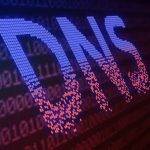Artificial Intelligence: What are 4 major cyber threats for 2024?

AI is one of the most powerful innovations of the decade, if not the most powerful. Yet with that power also comes the risk of abuse.
Whenever any new, disruptive technology is introduced to society, if there is a way for it to be abused for the nefarious gain of others, wrongdoers will find it. Thus, the threat of AI is not inherent to the technology itself, but rather an unintended consequence of bad actors using it for purposes that wreak havoc and cause harm. If we do not do something about these cyber threats posed by the misuse of AI, the legitimate, beneficial uses of the technology will be undermined.
Seven crucial dos and don'ts for cyber-attack survival

Think you’ve been hit by a cyber-attack? You need to move fast, but what immediate actions should you take, or should you not take? Here’s a Cyber Incident Responder’s guide to steer you through the turmoil. The actions your team takes -- or doesn’t take -- can greatly impact the overall duration of recovery, cost, and the potential to uncover vital evidence left by threat actors within your infrastructure.
Identifying a cyber security incident can be challenging. Many threat actors have mastered the art of quietly infiltrating IT systems and hiding their digital footprints. Not all cyber-attacks are as overt as encryption-based ransomware or mandate fraud. The rise of encryption-less ransomware and corporate and state-level espionage is concerning. These silent intruders can lead to data and intellectual property (IP) loss, diminished competitive edge or market share, potential regulatory fines, and reputational damage. All of which can be just as devastating, if not more so, to an organization, its employees, and investors, than a single ransomware incident.
Move over Google, LLMs are taking over!

When Google was founded in 1998, it ushered in a new era of access to information. The groundbreaking search engine wasn’t the first to debut (that was World Wide Web Wanderer in 1993), but it was the one that caught on. By 2004, Google was fielding over 200 million searches per day; by 2011, that number had exploded to about three billion daily searches. By that time, the word “Google” had morphed from just the name of the search engine to a verb that meant “to use an internet search engine.” Twenty years later, Google still dominates the market with an almost 84 percent share as of late 2023.
Though Google is still the most popular search engine, new technology has emerged that could threaten its supremacy -- LLMs. The use of this technology is growing at an astonishing rate. In fact, in February 2024, ChatGPT generated over 1.6 billion visits.
Top priorities for digital transformation strategy implementation

A digital transformation strategy requires a focus on its business value and ability to support key company initiatives. These initiatives are often tied to transformative changes in the business that are connected to customer experience, operational efficiency, and productivity gains. Too often, digital transformation projects are technology driven and lack understanding of business objectives, and do not engage the right stakeholders or clearly detail the needed business / technology roadmap for strategy implementation over a multi-year period.
There are several key actions that should take priority when implementing a digital transformation strategy. These are:
Poisoning the data well for Generative AI

The secret to generative AI’s success is data. Vast volumes of data that are used to train the large language models (LLMs) that underpin generative AI’s ability to answer complex questions and find and create new content. Good quality data leads to good outcomes. Bad, deliberately poisoned, or otherwise distorted data leads to bad outcomes.
As ever more organizations implement generative AI tools into their business systems, it’s important to reflect on what attackers can do to the data on which generative AI tools are trained.
The role of APIs within Large Language Models and the shift towards a multi-LLM world

With the arrival of Large Language Models (LLMs) such as ChatGPT, BERT, Llama, and Granite, the operational dynamics within the enterprise sector have significantly changed. LLMs introduce unique efficiencies, paving the way for innovative business solutions. LLMs currently stand at the forefront of technological advancement, offering enterprises the tools to automate complex processes, enhance customer experiences, and obtain actionable insights from large datasets.
The integration of these models into business operations marks a new chapter in digital transformation and therefore requires a closer look at their development and deployment.
Navigating the Cyber Trust Mark: A roadmap for IoT device manufacturers

There are more than 15 billion IoT devices worldwide, and that number is expected to reach 29 million by 2030, with consumer products like baby monitors, smartwatches, and fridges accounting for more than half. However, connectivity comes at a cost. Data usage, privacy concerns, and cyberattacks pose a serious threat to users and manufacturers. To address this, the government has implemented a Cyber Trust Mark Program to help people easily identify products that meet security standards. The initiative provides manufacturers with a roadmap to improve security and prepare for future requirements.
A key part of The Cyber Trust Mark program is that devices must pass tests designed to ensure security and data privacy. Securing connected solutions poses a unique challenge for manufacturers. While patching a network configuration issue is simple, software is often separated from connected device design workflows. This means security testing occurs in the final stages of product design, making it harder to build security from the ground up.
Dissecting the latest DNS-based attack trends -- What we're seeing and how to get ahead

As the foundational component of the internet, DNS has been around for over 40 years and yet, it remains a major vector for bad actors even today. You might think that DNS wouldn’t be such a big security concern today given how much time we’ve had to come up with a better way to secure it, but lo and behold, it’s still at least partially responsible for a large percentage of cyber-attacks.
DNS-based attacks can include everything from malware to phishing, to domain theft and DDoS (Distributed Denial of Service) attacks, among others. And these can have major consequences for the organizations hit by them. While there are countless examples, some of the most recent and well-publicized ones have included takedowns of ChatGPT and Google Cloud, though almost every bit of modern malware leverages DNS in some way.
How a curious, learning-oriented culture promotes innovation

Technology companies are experiencing tremendous challenges on several fronts. On the one hand, emerging technologies like Generative AI (Gen AI) are opening up new possibilities for revenue and growth. On the other, a tight labor market in general and an even tighter IT labor market means companies can’t just “buy” talent -- they’ve got to “build” it as well.
Encouraging creativity can reap significant rewards for businesses. People can think more deeply and freely about problem-solving and develop creative solutions by sparking curiosity. Research has shown that greater creativity can result in fewer decision-making errors, more innovation, reduced group conflict, more open communication and sharing of information, and better team performance.
Harnessing generative AI to create a new breed of supercharged lawyers and law firms

Traditionally the legal sector has lagged behind other industries when it comes to embracing new technologies. However, generative AI is proving to be the exception to the rule. Its potential to transform the profession, driving lawyers and firms to unlock new levels of productivity and efficiency, is too great to be ignored.
Growing numbers of law firms are putting their money where their mouths are, with global spending on legal AI software tools at already over $1 billion and projected to increase by almost 20 percent (CAGR) every year across the rest of the decade, reaching an estimated $37bn by the end of 2024. There’s a huge societal and industry shift underway; lawyers and law firms must act now, or risk being left behind.
Priorities for data center OT security in the cloud era

The decentralized nature of the cloud provides great flexibility for users, but it also introduces great vulnerabilities for data center operators. As an abundant source of valuable data, the modern data center has become a prime target for cybercriminals, from small business facilities to the huge hyperscale colocation data centers run by Amazon, Google, and Microsoft.
Protecting these interconnected facilities and the hardware and software systems that they physically host provides a perpetual job for security teams. But it’s important to recognize the clear distinction between securing information technology (IT) inside a data center facility, versus securing the operational technology (OT), or what’s called “cyber-physical systems” needed to run the facility itself. IT and OT involve two complementary but distinct categories of security and risk.
Cyber security and artificial intelligence -- business value and risk

In the current era of digitalization, cybersecurity has become a topmost priority for businesses, regardless of their size and nature. With the growing dependence on digital infrastructure and data, safeguarding against cyber threats has become crucial to ensure uninterrupted business operations. However, the evolving nature of cyberattacks poses significant challenges for traditional security measures.
This is where Artificial Intelligence (AI) emerges as a game-changer, offering substantial benefits and inherent risks in cybersecurity.
Balancing the rewards and risks of AI tools

AI’s promise of time and money saved has captivated employees and business leaders alike. But the real question is… is it too good to be true? As enticing as these rewards may be, the risks of this new technology must also be seriously considered.
Balancing the risks and rewards of AI is causing pause for many organizations as they grapple with the right way to adopt AI. Every deployment in every organization is going to look different -- meaning that the balance of risk and reward is also going to look different depending on the scenario. Here, we’ll talk through the promised rewards and the potential pitfalls of adopting generative AI technologies, as well as some guiding questions to help determine if it’s the right move for your business.
Navigating the surge of digital nomadism

Digital nomads are location-independent professionals who leverage technology to perform their jobs remotely while travelling the globe. What was once a niche lifestyle has now transformed into a formidable movement, with estimates suggesting that the digital nomad population increased by 131 percent between 2019 and 2022.
Today, 16 percent of companies globally permit their employees to work entirely remotely, a testament to the profound impact of this paradigm shift. Consequently, it is estimated that at least 40 million individuals across the world now identify as digital nomads, a figure that is poised to soar in the coming years.
The crypto nexus: The next compliance challenge

Cryptocurrency has been increasingly professionalized in recent years, offering millions of transactions to a global base of everyday users. However, this trend of mainstream investment has happened in tandem with recent high-profile prosecutions of former crypto leaders.
The decentralized nature of cryptocurrency still presents opportunities for bad actors to exploit, particularly for laundering money. Approximately $72 billion a year of illicit transactions is being paid for with crypto, a large portion of which is cleaning dirty money, according to a recent Europol report.
BetaNews, your source for breaking tech news, reviews, and in-depth reporting since 1998.
© 1998-2025 BetaNews, Inc. All Rights Reserved. About Us - Privacy Policy - Cookie Policy - Sitemap.
